Weegee: Murder Is My Business
For an intense decade between 1935 and 1946, Arthur Fellig, better known as Weegee, (1899-1968) was one of the most relentlessly inventive figures in American photography. His graphically dramatic and often lurid photographs of New York crimes and news events set the standard for what has become known as tabloid journalism and the credo of "If it bleeds, it leads!"
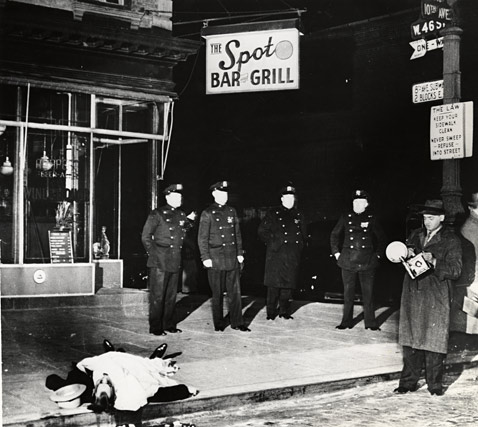
On the Spot , Dec. 9, 1939. [Weegee, right, is shown covering a crime scene with his trusty Speed Graphic camera.] (Unidentified photographer/International Center of Photography)
Weegee earned his pseudonym by frequently arriving at scenes minutes after the incidents occurred and well ahead of the authorities, as if through some psychic ability. The name was a phonetic spelling of the popular fortune-telling Quija board game. In actuality, his sixth sense was a radio tuned into police radio bands. Fellig also kept a complete darkroom in the trunk of his car so he could have photographic prints ready to deliver to newspapers.
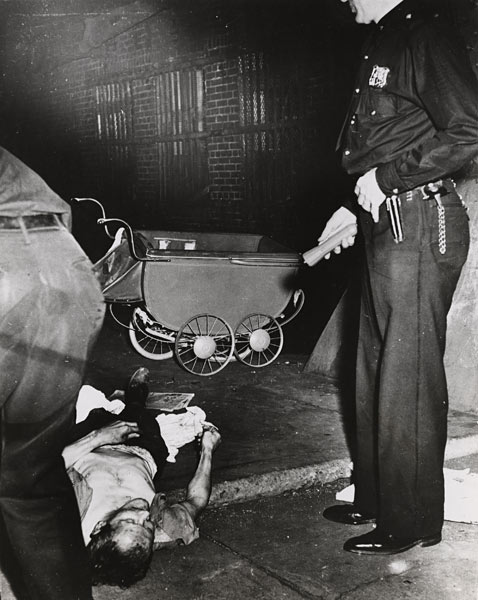
Murder , circa 1940 (© Weegee/International Center of Photography)
Freelancing for a variety of New York newspapers and photo agencies, and later working as photo editor for the short-lived liberal daily PM (1940-48), Weegee established a way of combining photographs and text that was distinctly different from that promoted by other picture magazines, such as Life. Utilizing other distribution venues, Weegee also wrote extensively (including his autobiographical Naked City, published in 1946) and organized his own exhibitions at the Photo League.
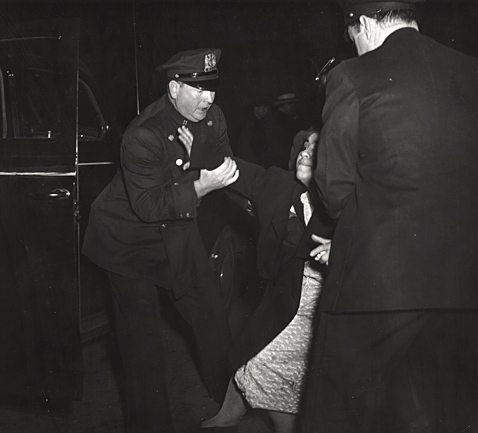
The dead man's wife arrived…and then she collapsed , circa 1940 (© Weegee/International Center of Photography)
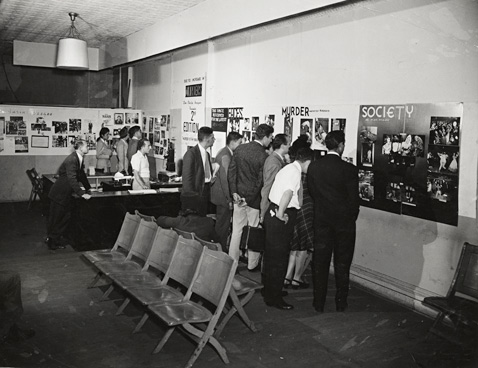
Installation view of "Weegee: Murder Is My Business II" at the Photo League, New York , 1941 (© Weegee/International Center of Photography)
An upcoming exhibition at the International Center of Photography in New York, draws upon on the extensive Weegee Archive at ICP and will include environmental recreations of Weegee's apartment and exhibitions. The exhibition is organized by ICP Chief Curator Brian Wallis and runs from Jan. 20 to Sept. 2, 2012.
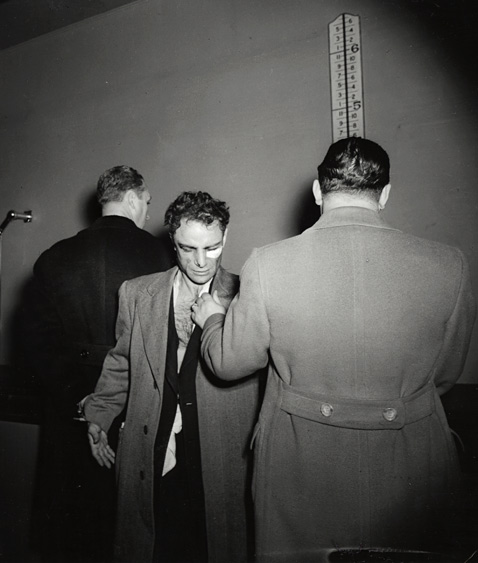
Anthony Esposito, Accused "Cop Killer," Jan. 16,1941 (© Weegee/International Center of Photography)
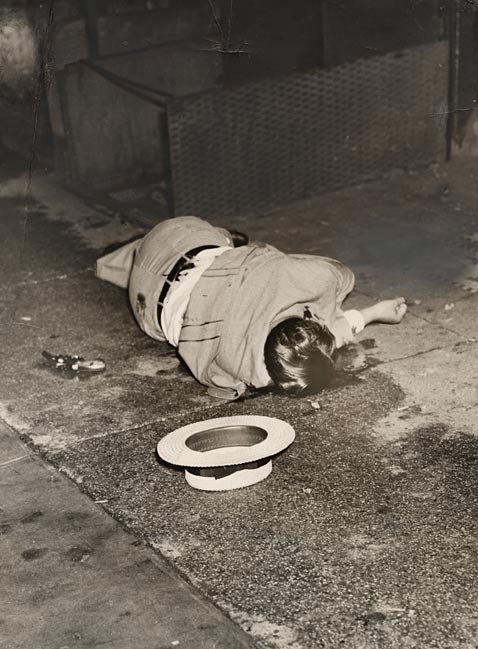
Body of Dominick Didato, Elizabeth Street, New York , Aug. 7, 1936 (© Weegee/International Center of Photography)

Police officer and assistant removing body of Reception Hospital ambulance driver Morris Linker from East River, New York , Aug. 24, 1943 (© Weegee/International Center of Photography)

Hold up man killed , Nov. 24, 1941. [On this photo, an editor's crop marks are shown in grease pencil.] (© Weegee/International Center of Photography)

Police officer and lodge member looking at blanket-covered body of woman trampled to death in excursion-ship stampede, New York , Aug. 18, 1941 (© Weegee/International Center of Photography)
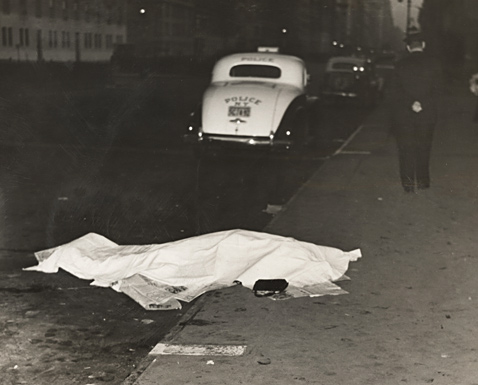
Girl jumped out of car, and was killed, on Park Ave. , circa 1938 (© Weegee/International Center of Photography)

Line-Up for Night Court , circa 1941 (© Weegee/International Center of Photography)